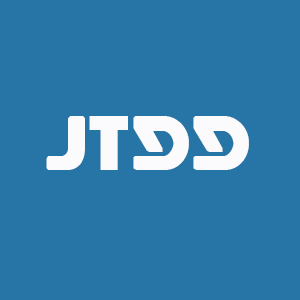REFERENCES
1. Regulation (EC) No 141/2000 of the European Parliament and the Council of 16 December 1999 on orphan medicinal products. European Parliament. Available from: https://eur-lex.europa.eu/legal-content/EN/TXT/?uri=celex%3A32000R0141 [Last accessed on 9 June 2022].
2. National Institute of Health. Public law 97-414 97th congress. Jan 4, 1983. Available from: https://history.nih.gov/research/downloads/PL97-414.pdf [Last accessed on 9 June 2022].
3. Nguengang Wakap S, Lambert DM, Olry A, et al. Estimating cumulative point prevalence of rare diseases: analysis of the Orphanet database. Eur J Hum Genet 2019;28:165-73.
4. Tisdale A, Cutillo CM, Nathan R, et al. The IDeaS initiative: pilot study to assess the impact of rare diseases on patients and healthcare systems. Orphanet J Rare Dis 2021;16:429.
5. Graessner H, Zurek B, Hoischen A, Beltran S. Solving the unsolved rare diseases in Europe. Eur J Hum Genet 2021;29:1319-20.
6. Austin CP, Cutillo CM, Lau LPL, et al. Future of rare diseases research 2017-2027: an IRDiRC perspective. Clin Transl Sci 2018;11:21-7.
7. Seaby EG, Rehm HL, O’Donnell-Luria A. Strategies to uplift novel mendelian gene discovery for improved clinical outcomes. Front Genet 2021;12:674295.
8. Kliegman RM, Bordini BJ, Basel D, Nocton JJ. How doctors think: common diagnostic errors in clinical judgment-lessons from an undiagnosed and rare disease program. Pediatr Clin N Am 2017;64:1-15.
9. About undiagnosed diseases. Available from: https://www.udninternational.org/schede-38-about_undiagnosed_diseases [Last accessed on 9 June 2022].
10. Boycott KM, Hartley T, Biesecker LG, et al. A diagnosis for all rare genetic diseases: the horizon and the next frontiers. Cell 2019;177:32-7.
11. Köhler S, Carmody L, Vasilevsky N, et al. Expansion of the human phenotype ontology (HPO) knowledge base and resources. Nucleic Acids Res 2019;47:D1018-27.
12. Yang J, Benyamin B, McEvoy BP, et al. Common SNPs explain a large proportion of the heritability for human height. Nat Genet 2010;42:565-9.
13. Pijuan J, Rodríguez-Sanz M, Natera-de Benito D, et al. Translational diagnostics: an in-house pipeline to validate genetic variants in children with undiagnosed and rare diseases. J Mol Diagn 2021;23:71-90.
14. Palau F. Medicina personalizada o de precisión: la homeostasis de la individualidad. Rev Soc Esp Bioq Biol Mol 2020;8-13. Available from: https://revista.sebbm.es/pdf.php?id=643 [Last accessed on 9 June 2022].
15. Palau F. Pediatric genomics and precision medicine in childhood. In: Faintuch J, Faintuch S, editors. Precision medicine for investigators, practitioners and providers. Cambridge: Academic Press, 2020; pp. 143-152. Available from: https://www.elsevier.com/books/precision-medicine-for-investigators-practitioners-and-providers/faintuch/978-0-12-819178-1 [Last accessed on 9 June 2022].
16. Manickam K, McClain MR, Demmer LA, et al. Exome and genome sequencing for pediatric patients with congenital anomalies or intellectual disability: an evidence-based clinical guideline of the American College of Medical Genetics and Genomics (ACMG). Genet Med 2021;23:2029-37.
17. Manning M, Hudgins L. Array-based technology and recommendations for utilization in medical genetics practice for detection of chromosomal abnormalities. Genet Med 2010;12:742-5.
18. Health (Quality). Genome-Wide Sequencing for Unexplained Developmental Disabilities or Multiple Congenital Anomalies: A Health Technology Assessment. Ont Health Technol Assess Ser 2020;20:1.
19. Rajagopalan R, Murrell JR, Luo M, Conlin LK. A highly sensitive and specific workflow for detecting rare copy-number variants from exome sequencing data. Genome Med 2020;12:14.
20. Srivastava S, Love-Nichols JA, Dies KA, et al. Meta-analysis and multidisciplinary consensus statement: exome sequencing is a first-tier clinical diagnostic test for individuals with neurodevelopmental disorders. Genet Med 2019;21:2413-21.
21. Gardner EJ, Prigmore E, Gallone G, et al. Contribution of retrotransposition to developmental disorders. Nat Commun 2019;10:4630.
22. Wang Q, Shashikant CS, Jensen M, Altman NS, Girirajan S. Novel metrics to measure coverage in whole exome sequencing datasets reveal local and global non-uniformity. Sci Rep 2017;7:885.
23. Mantere T, Kersten S, Hoischen A. Long-read sequencing emerging in medical genetics. Front Genet 2019;10:426.
24. Bamshad MJ, Nickerson DA, Chong JX. Mendelian gene discovery: fast and furious with no end in sight. Am J Hum Genet 2019;105:448-55.
25. Wenger AM, Guturu H, Bernstein JA, Bejerano G. Systematic reanalysis of clinical exome data yields additional diagnoses: implications for providers. Genet Med 2017;19:209-14.
26. Gardner EJ, Sifrim A, Lindsay SJ, et al. Detecting cryptic clinically relevant structural variation in exome-sequencing data increases diagnostic yield for developmental disorders. Am J Hum Genet 2021;108:2186-94.
27. Basel-Salmon L, Orenstein N, Markus-Bustani K, et al. Improved diagnostics by exome sequencing following raw data reevaluation by clinical geneticists involved in the medical care of the individuals tested. Genet Med 2019;21:1443-51.
28. Salinas V, Martínez N, Maturo JP, et al. Clinical next generation sequencing in developmental and epileptic encephalopathies: Diagnostic relevance of data re-analysis and variants re-interpretation. Eur J Med Genet 2021;64:104363.
29. Bullich G, Matalonga L, Pujadas M, et al. Systematic collaborative reanalysis of genomic data improves diagnostic yield in neurologic rare diseases. J Mol Diagn 2022;24:529-42.
30. McNulty SN, Evenson MJ, Corliss MM, et al. Diagnostic utility of next-generation sequencing for disorders of somatic mosaicism: a five-year cumulative cohort. Am J Hum Genet 2019;105:734-46.
31. Krawczynska N, Wierzba J, Wasag B. Genetic mosaicism in a group of patients with cornelia de lange syndrome. Front Pediatr 2019;7:203.
32. Jamuar SS, Lam AT, Kircher M, et al. Somatic mutations in cerebral cortical malformations. N Engl J Med 2014;371:733-43.
33. Stutterd CA, Brock S, Stouffs K, et al. Genetic heterogeneity of polymicrogyria: study of 123 patients using deep sequencing. Brain Commun 2021;3:fcaa221.
34. Bi W, Borgan C, Pursley AN, et al. Comparison of chromosome analysis and chromosomal microarray analysis: what is the value of chromosome analysis in today’s genomic array era? Genet Med 2013;15:450-7.
35. Astbury C, Christ LA, Aughton DJ, et al. Detection of deletions in de novo "balanced" chromosome rearrangements: further evidence for their role in phenotypic abnormalities. Genet Med 2004;6:81-9.
36. Aref-Eshghi E, Schenkel LC, Lin H, et al. Clinical validation of a genome-wide DNA methylation assay for molecular diagnosis of imprinting disorders. J Mol Diagn 2017;19:848-56.
37. Aref-Eshghi E, Bend EG, Colaiacovo S, et al. Diagnostic utility of genome-wide DNA methylation testing in genetically unsolved individuals with suspected hereditary conditions. Am J Hum Genet 2019;104:685-700.
38. Sadikovic B, Levy MA, Kerkhof J, et al. Clinical epigenomics: genome-wide DNA methylation analysis for the diagnosis of Mendelian disorders. Genet Med 2021;23:1065-74.
39. Eriksson M, Brown WT, Gordon LB, et al. Recurrent de novo point mutations in lamin A cause Hutchinson-Gilford progeria syndrome. Nature 2003;423:293-8.
40. Luo HM, Zhang Y, Wang XQ, et al. Identification and control of a poliomyelitis outbreak in Xinjiang, China. N Engl J Med 2013;369:1981-90.
41. Cummings BB, Marshall JL, Tukiainen T, et al. Improving genetic diagnosis in Mendelian disease with transcriptome sequencing. Sci Transl Med 2017;9:eaal5209.
42. Kremer LS, Bader DM, Mertes C, et al. Genetic diagnosis of Mendelian disorders via RNA sequencing. Nat Commun 2017;8:15824.
43. Kernohan KD, Frésard L, Zappala Z, et al. Whole-transcriptome sequencing in blood provides a diagnosis of spinal muscular atrophy with progressive myoclonic epilepsy. Hum Mutat 2017;38:611-4.
44. Lee H, Huang AY, Wang LK, et al. Diagnostic utility of transcriptome sequencing for rare Mendelian diseases. Genet Med 2020;22:490-9.
45. Frésard L, Smail C, Ferraro NM, et al. Identification of rare-disease genes using blood transcriptome sequencing and large control cohorts. Nat Med 2019;25:911-9.
46. Hartley T, Lemire G, Kernohan KD, Howley HE, Adams DR, Boycott KM. New diagnostic approaches for undiagnosed rare genetic diseases. Annu Rev Genomics Hum Genet 2020;21:351-72.
47. Mischak H, Allmaier G, Apweiler R, et al. Recommendations for biomarker identification and qualification in clinical proteomics. Sci Transl Med 2010;2:46ps42.
48. Caterino M, Chandler RJ, Sloan JL, et al. The proteome of methylmalonic acidemia (MMA): the elucidation of altered pathways in patient livers. Mol Biosyst 2016;12:566-74.
49. Caterino M, Pastore A, Strozziero MG, et al. The proteome of cblC defect: in vivo elucidation of altered cellular pathways in humans. J Inherit Metab Dis 2015;38:969-79.
50. Zhan X, Long Y, Lu M. Exploration of variations in proteome and metabolome for predictive diagnostics and personalized treatment algorithms: Innovative approach and examples for potential clinical application. J Proteomics 2018;188:30-40.
51. Costanzo M, Zacchia M, Bruno G, Crisci D, Caterino M, Ruoppolo M. Integration of proteomics and metabolomics in exploring genetic and rare metabolic diseases. Kidney Dis (Basel) 2017;3:66-77.
52. Marcke C, Collard A, Vikkula M, Duhoux FP. Prevalence of pathogenic variants and variants of unknown significance in patients at high risk of breast cancer: A systematic review and meta-analysis of gene-panel data. Crit Rev Oncol Hematol 2018;132:138-44.
53. Richards S, Aziz N, Bale S, et al. Standards and guidelines for the interpretation of sequence variants: a joint consensus recommendation of the American College of Medical Genetics and Genomics and the Association for Molecular Pathology. Genet Med 2015;17:405-24.
54. Klee EW, Cousin MA, Pinto E Vairo F, et al. Impact of integrated translational research on clinical exome sequencing. Genet Med 2021;23:498-507.
55. Yubero D, Natera-de Benito D, Pijuan J, et al. The Increasing impact of translational research in the molecular diagnostics of neuromuscular diseases. Int J Mol Sci 2021;22:4274.
56. Board of Directors. Laboratory and clinical genomic data sharing is crucial to improving genetic health care: a position statement of the American College of Medical Genetics and Genomics. Genet Med 2017;19:721-2.
57. Philippakis AA, Azzariti DR, Beltran S, et al. The matchmaker exchange: a platform for rare disease gene discovery. Hum Mutat 2015;36:915-21.
58. Karczewski KJ, Francioli LC, Tiao G, et al. The mutational constraint spectrum quantified from variation in 141. Nature 2020;581:434-43.









